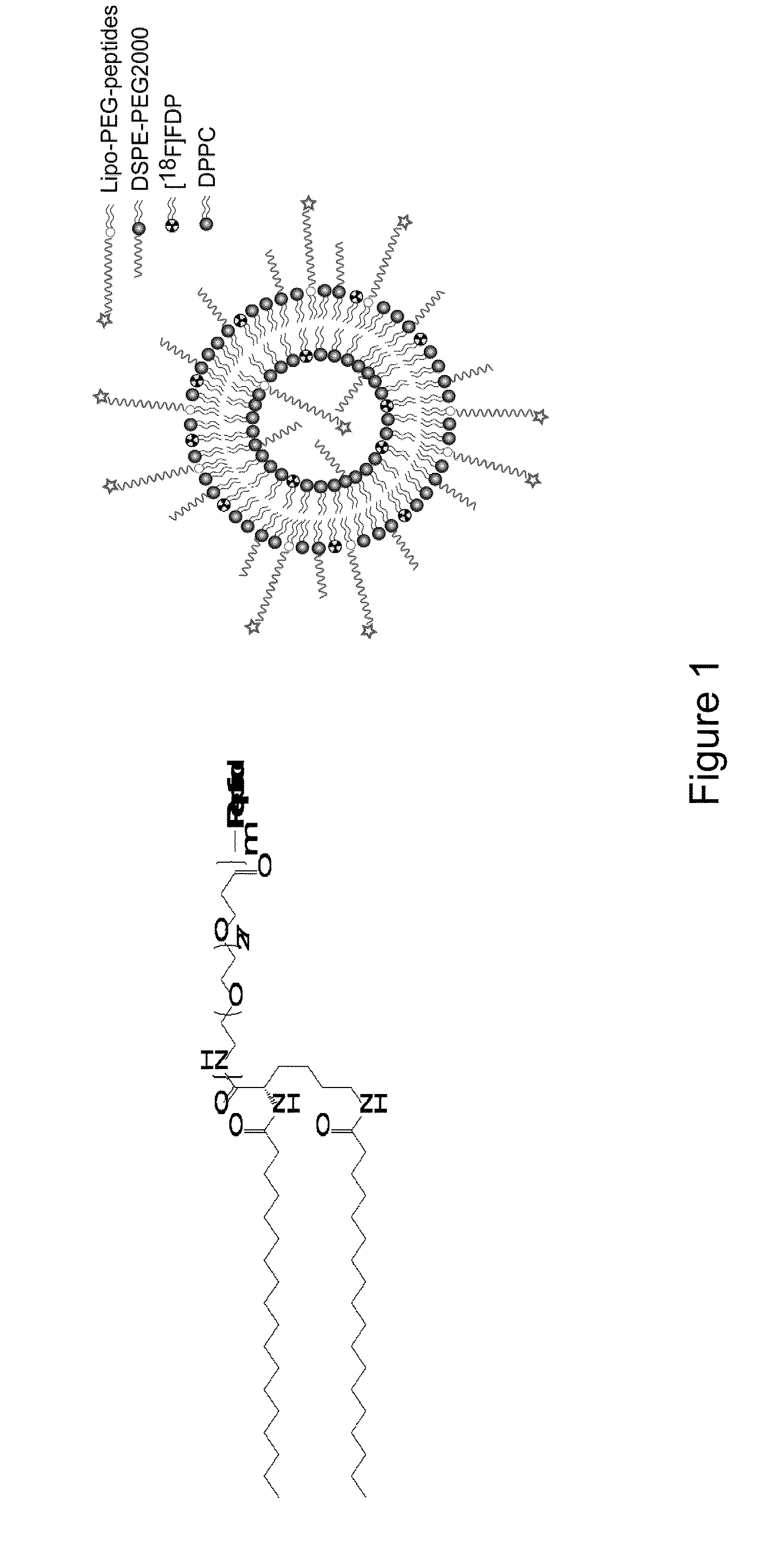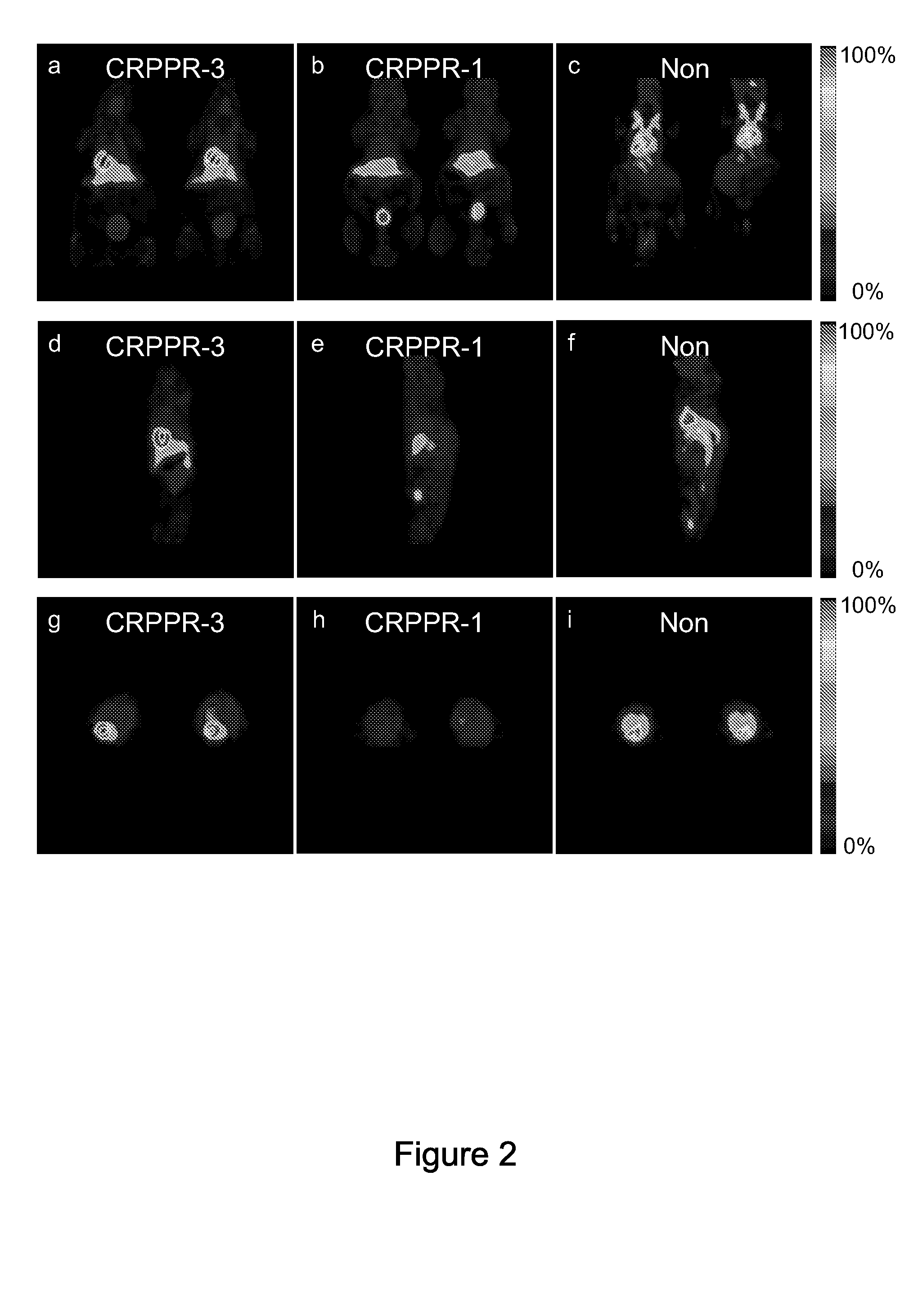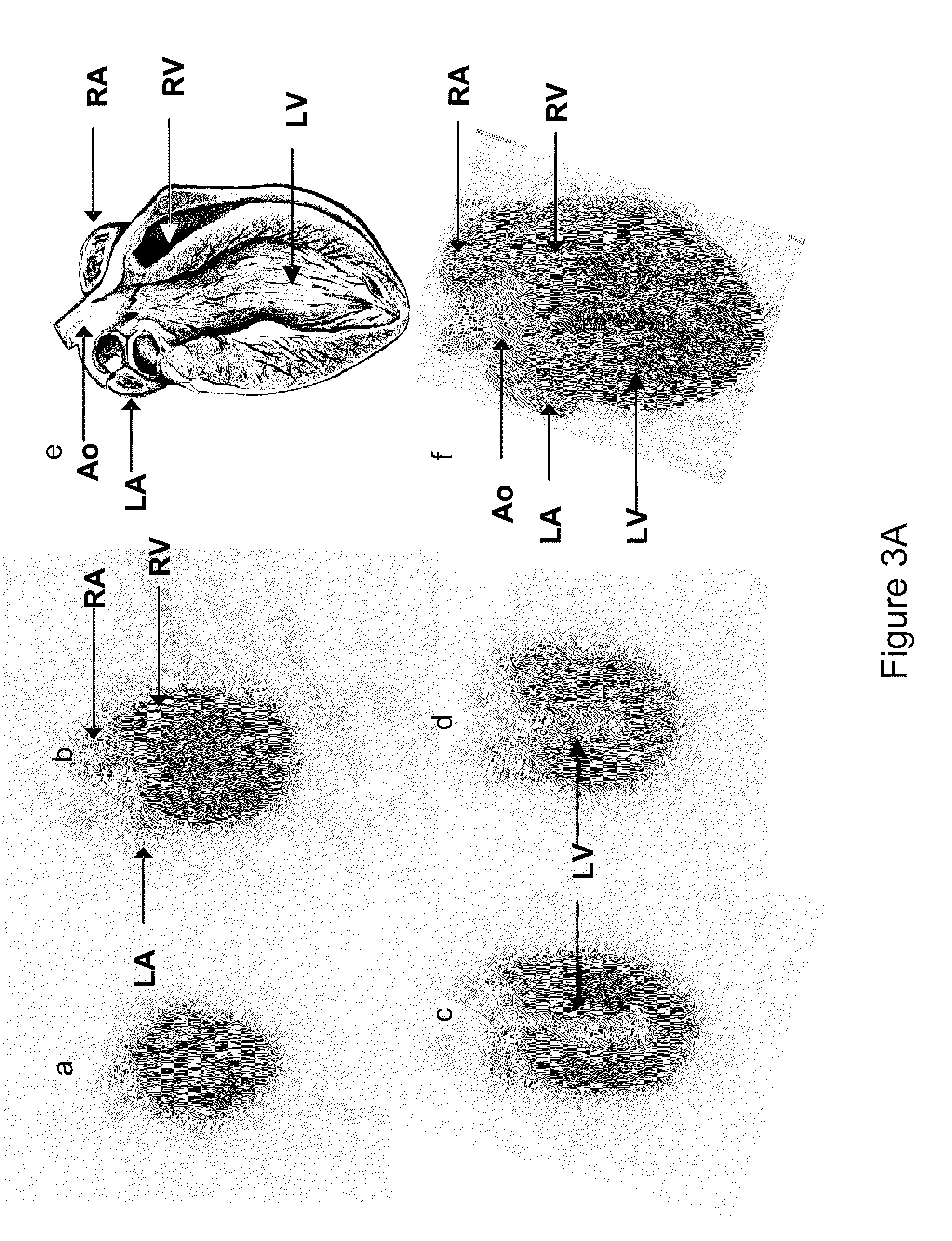Methods And Compounds For Targeting Tissues
a tissue and target technology, applied in the field of molecular medicine, drug and gene delivery, imaging, etc., can solve the problems of low tissue penetration, high molecular weight, antibody-targeted liposomes, etc., and achieve the effect of increasing avidity
- Summary
- Abstract
- Description
- Claims
- Application Information
AI Technical Summary
Benefits of technology
Problems solved by technology
Method used
Image
Examples
example 1
Liposome Diameter, Zeta Potential, Lipo-PEG-Peptide (LPP) Incorporation, and in Vitro Binding
[0162]The LPP (structure shown in FIG. 1a), radiolabeled lipid ([18F]FDP), phospholipid (DPPC), and pegylated phospholipid (DSPE-PEG2000) were combined to produce a composition (FIG. 1b, with formulations and notation detailed in FIG. 1 caption), with a polymer brush layer of 2000 molecular weight (MW) and a ligand that was either exposed (m=3 in FIG. 1a) or buried (m=1). Initial in vitro studies indicated that the formulation of CRPPR-3:DSPE-PEG2000:DPPC=6%:6%:88% (mol / mol) produced effective targeting, therefore this formulation was employed in in vitro studies and as the baseline formulation in in vivo studies. In vivo results with the CRPPR-3:DSPE-PEG2000:DPPC=6%:6%:88% were compared with matched total PEG concentration (12%), LPP concentration (6%), DSPE-PEG2000 concentration (6%), or LPP:DSPE-PEG2000 ratio (1:1), while other parameters were varied (Table 1). For abbreviations in Table ...
example 2
PET Images
[0164]Ninety-minute accumulative PET images (FIG. 2a-i) acquired with the [18F]FDP and CRPPR-3 incorporated into the liposomal vectors (FIG. 2a, d, g) demonstrate the high level of the radiotracer within the heart, a lower density within the liver, and a low concentration within the spleen and bladder. Images acquired with the shorter PEG length LPP (CRPPR-1) loaded onto an identical vehicle demonstrate that radioactivity has accumulated within the liver and bladder at 90 minutes and a low level of activity is present in the heart (FIG. 2b, e, h). Clearance of the radiotracer occurs through the bladder, after metabolism in the liver separates the fatty acid chains (each with a molecular weight of 256) from the head group containing the isotope (with a molecular weight of 94). By comparison, images acquired with the identical vehicle, without a peptide attached to the liposome, demonstrate that the radioisotope is primarily circulating within the blood volume throughout the...
example 3
Effect of Peptide and Surface Architecture on Biodistribution at 90 Minutes
[0166]Well counts obtained from harvested tissues at the ninety-minute time point quantify the differences in biodistribution produced by the peptide (FIGS. 4a and b), the length of the PEG spacer between the fatty acid and CRPPR peptide portions of the LPP (FIG. 4c), and the molar fraction of the CRPPR-3 incorporated within the vehicle (FIG. 4d). When injected on a vehicle containing CRPPR-3, the concentration of the tracer was significantly higher within the heart than other organs (pb) at levels of 39±13, 26±13, 17±5% ID / g for CPPRR-3, CRRRR-3, and CRRPP-3, respectively, with target to skeletal muscle ratios of 32, 23 and 19. Injection of vehicles with the cyclized RGD peptide and an otherwise identical liposome surface architecture did not produce radioactivity above the baseline (no-peptide) case. The cyclized RGD and no-peptide controls also resulted in significantly lower activity levels within the liv...
PUM
| Property | Measurement | Unit |
|---|---|---|
| Fraction | aaaaa | aaaaa |
| Fraction | aaaaa | aaaaa |
| Fraction | aaaaa | aaaaa |
Abstract
Description
Claims
Application Information
 Login to View More
Login to View More - R&D
- Intellectual Property
- Life Sciences
- Materials
- Tech Scout
- Unparalleled Data Quality
- Higher Quality Content
- 60% Fewer Hallucinations
Browse by: Latest US Patents, China's latest patents, Technical Efficacy Thesaurus, Application Domain, Technology Topic, Popular Technical Reports.
© 2025 PatSnap. All rights reserved.Legal|Privacy policy|Modern Slavery Act Transparency Statement|Sitemap|About US| Contact US: help@patsnap.com



